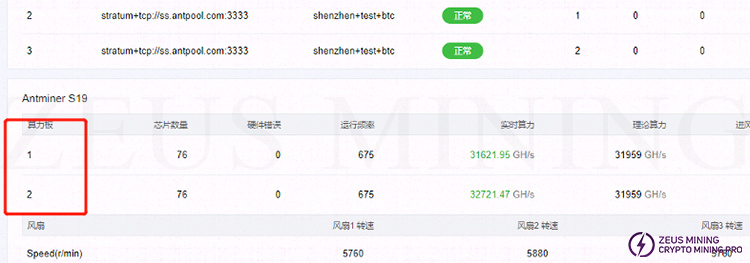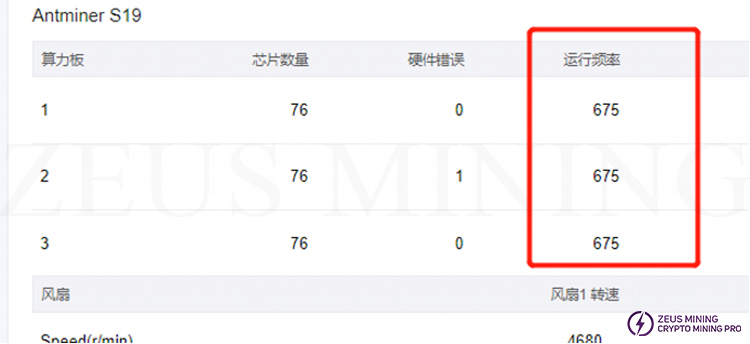


S19 miners have low hash rates after the long-term operation, most of which are caused by the following reasons, and you can check and solve them one by one according to these symptoms.
1. Drop board
When the miner's hash board error cannot trigger the miner protection mode (such as unable to locate the board, the log does not check the failure at startup, etc.), and the miner can run with fewer boards, it means that the miner's hash rate is low.

Solution: Please try reconnecting the data cable or seek technical support from ZEUSMINING.
2. Abnormal frequency
When repairing the miner (replacing EEPROM or PIC, etc.) or repairing a single hash board, the frequency of the hash board may be changed, causing the frequency to be different from the original setting, making the miner run at a low frequency, resulting in a low hash rate of the miner.

Model | Miner hash rate | Frequency |
S19 | 95T | 675M |
S19 | 90T | 650M |
S19 | 86T | 625M |
S19 | 82T | 600M |
Solution: Generally, this problem will not affect the normal use of miners, but if you need to restore the original hash rate, you can seek ZEUSMINIG technical support or send it to the nearest repair center for repair.
3. ASIC chip aging / unstable
After starting up, the miner can run normally. Still, after running for a while, a single hash board shows 0, or the miner’s hash rate is lower than the standard hash rate (generally fluctuates by about 5%), but it can still run normally. However, the defect rate will be significantly higher than the other 2 boards so the ASIC IC may be unstable or aging.
Solution: If it does not affect normal use, it is recommended to continue to use; if it affects normal use, it is recommended to replace the unstable or aging ASIC chip.
For more information about S19 miners' faults, please refer to: [19 series] Common problems and solutions for miners' kernel logs